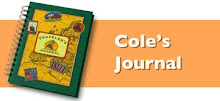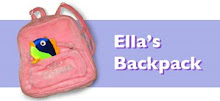A quick 2-hour cruise and here we are in Croatia. We arrived Rovinj (Roe-veen) late at night, but we knew we found someplace special. Our apartment was right on the harbor and everything was bustling with activity. This is my new favorite city! The kids loved to walk around the edge of town because the water is like looking down into a big aquarium. Angie and I get a little nervous, but you can’t fault them for wanting to check out all the creatures. The water is crystal clear but we had to buy some water shoes for swimming, as everything here is rock.
It’s funny getting used to another new language. After being in Italy so long, I find myself still using a lot of Italian phrases when talking with people. Turns out English is fairly common here though, especially with the younger generation. A 30 year-old man working at the produce market asked us where we were from the other day. We told him “Minnesota”, but given his puzzled look, we thought he might know “Illinois”. His response to that was “Oh…Springfield, Illinois”. Now it was us with the puzzled look. How would he know Springfield, Illinois? He went on to explain his familiarity thanks to “The Simpsons”.
Later in the week we rented a car to explore the rest of the Istrian peninsula. Once a part of Italy, the area fell under communist rule after World War II. Now a vital part of Croatia, it’s famous for it’s truffles and beautiful coastline. We started in Pula located on the tip of the peninsula. We expected some more great sea views, but found the entire shoreline covered with massive ship building cranes. Apart from the Roman Coliseum in the middle of everything (the 6th largest ever built), the town was a bit disappointing. After that we headed to the interior to find Motovun, Mario Andretti’s hometown. While the surrounding landscape here is very different than Tuscany, this is definitely an Italian hill town. Beyond it though, it was a bit deserted until we found our way back to the coast.

All roads led skyward to St. Euphemia’s Church. All the lanes are lined with little shops and galleries which help you forget about the incline you’re climbing. Upon reaching the church, we decided to go higher and climbed the bell tower. “Nice and easy” was the motto, as we slowly made our way up the 200 year-old, half-worn away, 2x4’s. The next couple of photos are from the bell tower, looking back towards the mainland. The main harbor is off to the right.


Look real close and you'll see the kids lined up in the windows of our apartment. In the next photo you can match up these buildings to find our place on right side.



Sunsets are easy to come by here. Believe it or not, this photo has not been color enhanced.

At night many areas along the coast get illuminated underwater. Restaurants, bars, and swimming holes, take advantage of the unique setting. We found a time to snap this photo with no one else around, but I had plenty of company jumping off the rocks.


One of the local fishing crews dividing up the catch.



Roman Coliseum, Pula

This shot may look familiar...it's the same viewpoint Angie used to paint one of her Mario Andretti paintings, depicting his hometown of Motovun.

The central building in this photo is where Mario grew up. The house shares a private courtyard with the church on the right.


 This was our last sunset in Split. Another beauty!
This was our last sunset in Split. Another beauty!


























































